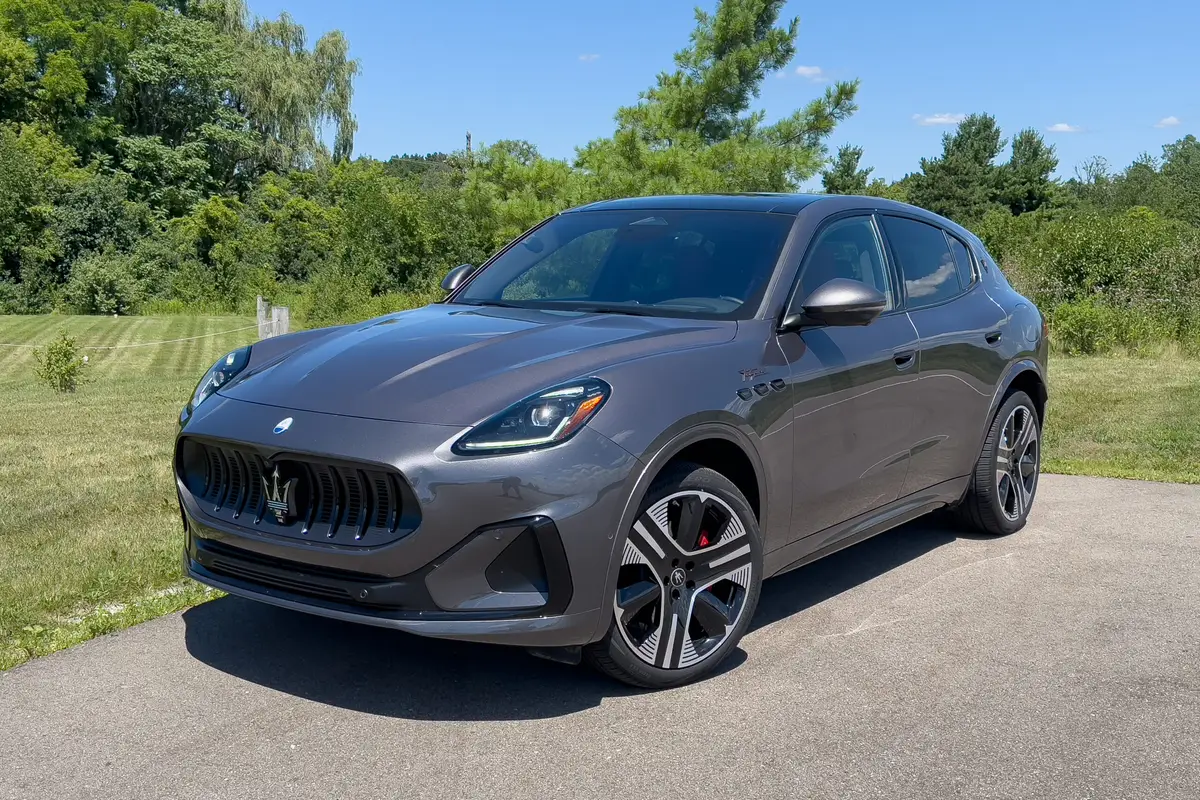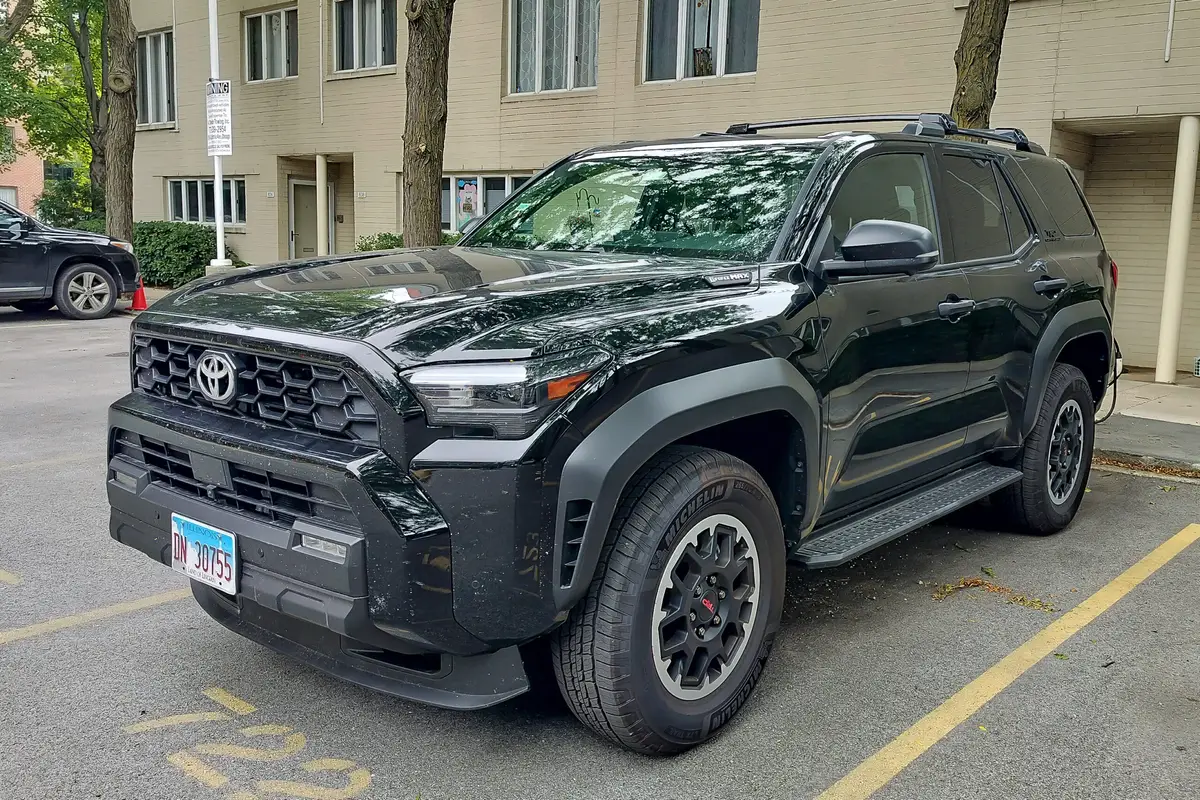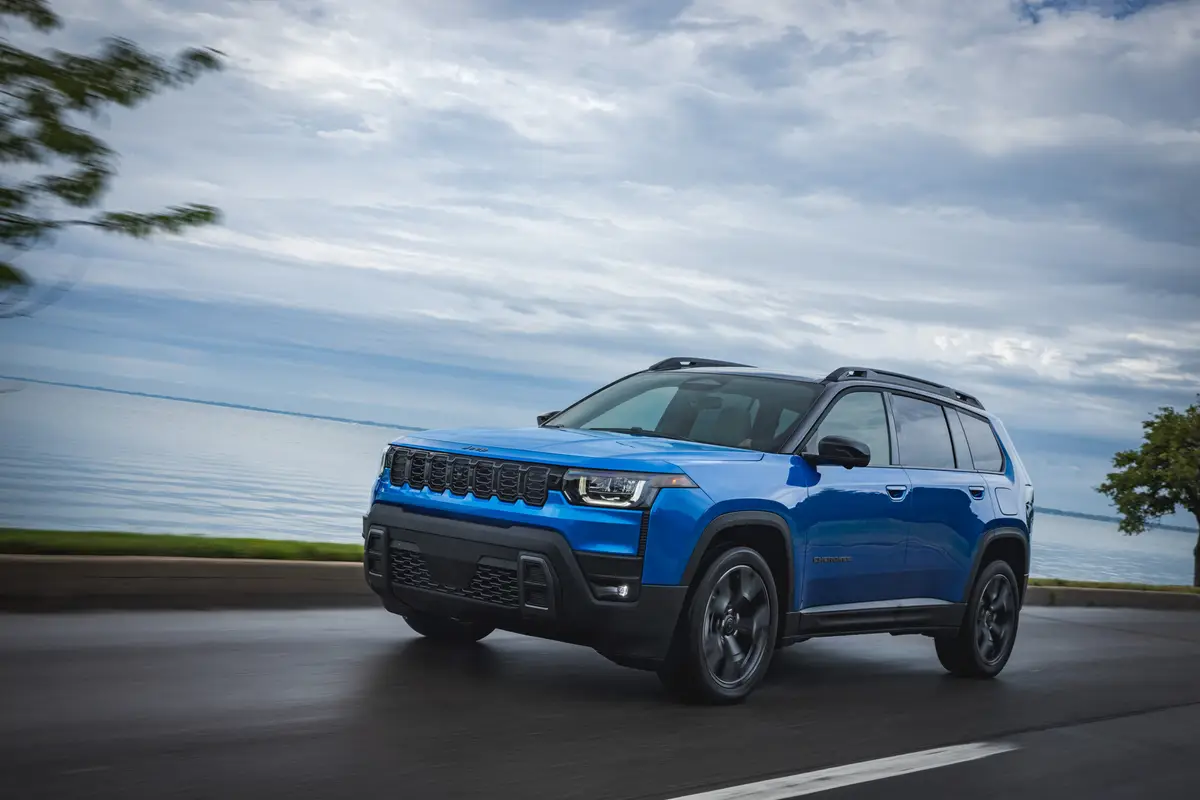What's New: 2019 Subaru Forester
Exterior
The Forester lost style points in the transition for the 2014 model from a sleeker, wagonlike design to the current lumpier shape with pronounced headlights and taillights. By comparison, the 2019’s design is more athletic and less boxy, with sharper side sculpting, more pronounced wheel arches and a trimmer rear end. The Subaru hexagonal grille is bolder, and the front end now looks more like other new Subaru designs, such as the Impreza and Crosstrek.
Familiar, however, is the beltline’s kick-up to the back pillar, as well as the tall glass all around that has made the Forester a leader among compact SUVs for safe visibility. If you think the big windows and low beltline don’t bring enough airiness to the cabin, a panoramic moonroof remains an option. All models now get LED headlights, and all continue to sport lower cladding on all sides. Rear doors open wider for help with access and child-safety seat use.
The new Sport trim level gets a sportier look with a black-framed grille, black 18-inch wheels and a rear roof spoiler. It also gets orange accents on the black body underguards and on the roof rail mounts.
Interior and Tech
The 2019 Forester’s wheelbase is up more than an inch to 105.1 inches, a stretch that adds 1.4 inches more rear legroom, to 39.4. Subaru says that efficient packaging also increases hip and shoulder room a bit. It also increases maximum cargo space by about 2 cubic feet to 76.1 with the 60/40-split folding rear seatback down. Loading also should be easier with a liftgate widened by 5.3 inches to 51.3 inches, a drywall-like width that will make the 2019 Forester among the widest versus its compact SUV rivals. A power liftgate is available on all but the base model and is standard on the Limited and Touring. Accessory-capable roof rails are standard on all but the base model.
Cabin noise has been a complaint about past Foresters, and Subaru says that the stiffer new global platform improves vibration and noise. It also says that additional work has been done to tune out annoying sound frequencies that show up at highway speeds.
A multimedia system with 6.5-inch display is standard; higher trim levels get an 8-inch touchscreen. Android Auto and Apple CarPlay smartphone integration is standard on all.
Keyless access with push-button start is standard from the Sport trim up and on these models, the Subaru Starlink connected services include remote start with climate control from the smartphone app. The available connected services also include emergency assistance and teen driver safety features such as geofencing and speed alerts.
The 2019 Forester’s seats are a new design, and the new Sport model gets its own gray cloth upholstery with orange contrast stitching. A new electronic parking brake frees up additional console storage, and automatic climate control also is standard on all models. The Touring trim level gets added upscale feel with amenities that include a standard 10-way power driver’s seat and a new eight-way power front passenger seat as well as new heated rear seats along with heated front seats and a heated steering wheel. Also new for 2019, the driver memory function includes outside mirror positions, and city drivers will appreciate that those mirrors now tilt down when the transmission is in reverse.
It wouldn’t be a Forester, though, without some additional love for practical details, and one is a new textured material for the cargo area’s floor, sides and liftgate panel that resists dirt and scuffing and is easier to clean.
Under the Hood
The sole engine offering for 2019 is a revised version of the 2.5-liter boxer four-cylinder that puts out 182 hp, up from 170 currently, and 176 pounds-feet of torque, up 2 pounds-feet. It is paired with a continuously variable automatic transmission. A “manual mode” with steering wheel paddles on the Sport and Touring models mimics a seven-speed transmission with artificial shift steps.
Dropped is the 250-hp, turbo 2.0-liter option, as is the manual transmission for the base mode. A stop-start system is standard and Subaru estimates that the new powertrain will achieve a 33-mpg highway mileage rating, up from 32 mpg highway for the current version of the 2.5-liter.
Standard on all Foresters is Subaru’s active torque-vectoring all-wheel drive that shifts power in response to acceleration, deceleration and cornering, as well as for traction. The trims get 17- or 18-inch wheels, alloy on all but the base model, and all models have 8.7 inches of ground clearance. The Premium, Sport, Limited and Touring have a standard driver-selectable X-Mode with hill descent control that optimizes the powertrain, all-wheel drive and chassis systems for slippery conditions and steep inclines. An X-Mode upgrade for 2019 for the Sport, Limited and Touring models offers a choice of Snow/Dirt or Deep Snow/Mud modes.
Safety and Driver Assistance
The Subaru EyeSight package of safety and driver assistance technology is standard for all Foresters. It includes a front collision system with automatic emergency braking, adaptive cruise control, a lane departure warning, a trailer sway warning and lane keep assist. Available in addition are blind spot warning and rear cross-traffic alert with automatic braking. Sport, Limited and Touring models have standard automatic high beams and the Touring trim includes adaptive headlights. New for 2019 on the Touring model is a driver fatigue and distraction alert system.
Featured stories




